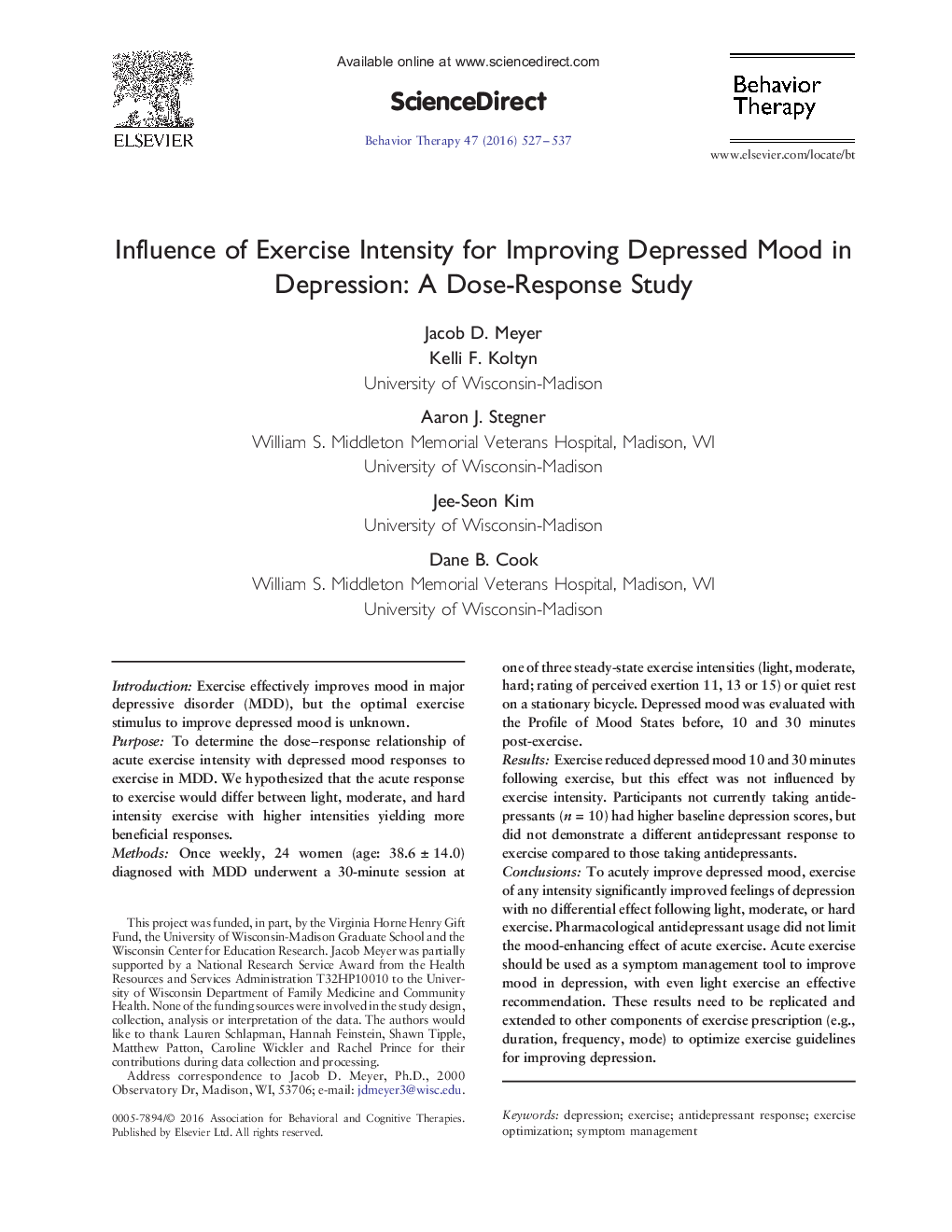| Article ID | Journal | Published Year | Pages | File Type |
|---|---|---|---|---|
| 901151 | Behavior Therapy | 2016 | 11 Pages |
•Acute exercise is a potent short-term antidepressant in depressed women.•Exercise intensity does not moderate the antidepressant response to acute exercise.•Antidepressant medication use does not interfere with increased mood post-exercise.•Acute exercise should be employed as a symptom management tool in depression.
IntroductionExercise effectively improves mood in major depressive disorder (MDD), but the optimal exercise stimulus to improve depressed mood is unknown.PurposeTo determine the dose–response relationship of acute exercise intensity with depressed mood responses to exercise in MDD. We hypothesized that the acute response to exercise would differ between light, moderate, and hard intensity exercise with higher intensities yielding more beneficial responses.MethodsOnce weekly, 24 women (age: 38.6 ± 14.0) diagnosed with MDD underwent a 30-minute session at one of three steady-state exercise intensities (light, moderate, hard; rating of perceived exertion 11, 13 or 15) or quiet rest on a stationary bicycle. Depressed mood was evaluated with the Profile of Mood States before, 10 and 30 minutes post-exercise.ResultsExercise reduced depressed mood 10 and 30 minutes following exercise, but this effect was not influenced by exercise intensity. Participants not currently taking antidepressants (n = 10) had higher baseline depression scores, but did not demonstrate a different antidepressant response to exercise compared to those taking antidepressants.ConclusionsTo acutely improve depressed mood, exercise of any intensity significantly improved feelings of depression with no differential effect following light, moderate, or hard exercise. Pharmacological antidepressant usage did not limit the mood-enhancing effect of acute exercise. Acute exercise should be used as a symptom management tool to improve mood in depression, with even light exercise an effective recommendation. These results need to be replicated and extended to other components of exercise prescription (e.g., duration, frequency, mode) to optimize exercise guidelines for improving depression.
